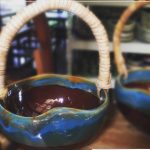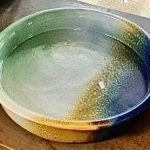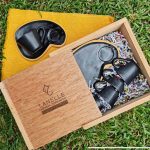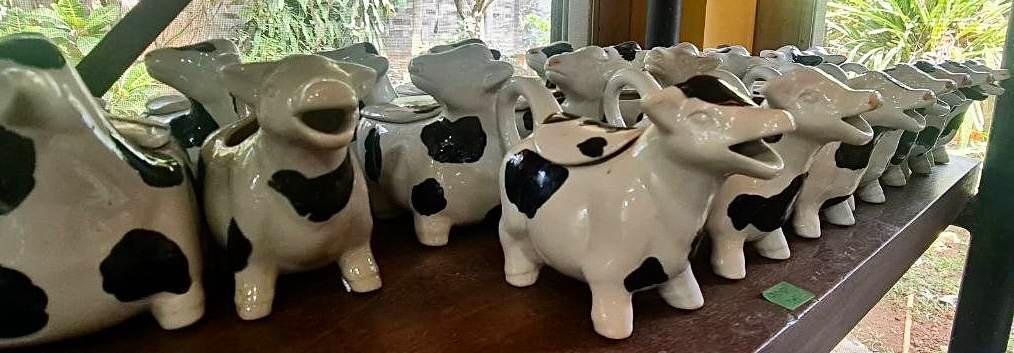IS POTTERY AN ART OR A CRAFT?
Meet Lanelle Abueva-Fernando, Artisan and Assumption Old Girl
By: Mariana Lopa
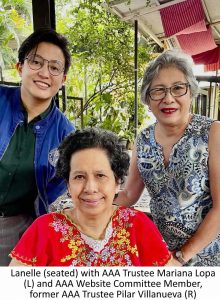 Though I was tasked to interview LANELLE ABUEVA-FERNANDO, she was the one who posed the most compelling question: “IS POTTERY AN ART OR A CRAFT?” Luckily, she answered it as well; she said: “It can be both – art is anything you do with the heart; anything that comes out beautiful is a work of art. Craft is more utilitarian. Pottery is both beautiful and useful.”
Though I was tasked to interview LANELLE ABUEVA-FERNANDO, she was the one who posed the most compelling question: “IS POTTERY AN ART OR A CRAFT?” Luckily, she answered it as well; she said: “It can be both – art is anything you do with the heart; anything that comes out beautiful is a work of art. Craft is more utilitarian. Pottery is both beautiful and useful.”
Lanelle spent her school-age years traveling around the world together with her family; she lived and studied in the U.S.A, Kathmandu, and the Philippines where she attended Grades 1 to 4, Grade 7, and 2nd year High School in Assumption, then located in Herran, Manila. She eventually enrolled and obtained her degree in Fine Arts from the University of the Philippines.
Shortly after leaving UP, Lanelle and her family made yet another move — this time to Japan — where she noticed the intricate designs on the Japanese Kimonos, as well as the beautiful ceramics that she saw at museums and galleries. It was at that point that she decided to pursue pottery and was taken in as an apprentice of a sensei in Hachijō-jima. At the time, she was one of six other apprentices; the only non-Japanese and the only girl!
When Lanelle first started her training, she learned that the sensei preferred students with little to no background – “clean slates”, so to speak – so that they could learn the sensei’s style without being influenced by their own personal techniques. And boy did Lanelle and her co-apprentices learn as they were tasked to create 500 teacups every day. If the sensei did not approve of the finished product, he would discard it by throwing it away or breaking it. When asked what the sensei was looking for, he simply said: “something with life, something that speaks to me”. It was also there that Lanelle learned the values of discipline and hard work – no shortcuts, no complaining.
 Despite the apprenticeship being for a period of 7 years, Lanelle decided to depart early and leave after only 3 years. At that point, she opted to move to a one-year ceramics program at Sun Valley Center for the Arts in Idaho. In the USA, pottery was a totally different experience for Lanelle because she was given more freedom to create pieces that she wanted.
Despite the apprenticeship being for a period of 7 years, Lanelle decided to depart early and leave after only 3 years. At that point, she opted to move to a one-year ceramics program at Sun Valley Center for the Arts in Idaho. In the USA, pottery was a totally different experience for Lanelle because she was given more freedom to create pieces that she wanted.
Eventually, Lanelle moved back to the Philippines; however, moving back to the Philippines was not a walk in the park for her. Being influenced by both the Japanese and American techniques, Lanelle’s work was focused on creating “one-of-a-kind” pieces. Unfortunately, consumers saw the uniqueness as imperfections, calling her pieces “tabingi” or pointing out the inconsistent glaze. But, come 1991, Mount Pinatubo erupted and Lanelle began incorporating the volcanic ash glaze into her pieces – a practice that she learned from Hachijō-jima, which is also a volcanic island. Lanelle stuck to her craft and continued to insist that in pottery, there is no perfect piece. Eventually, she had restaurants and hotels asking her to supply them with her pieces. Her success in the field embodies lessons that she learned from her sensei and her teachers from the USA: “Never be pleased with what comes out or else you’ll become stagnant. Keep working so you’ll be inspired to do the next piece.”
Looking back at her life as a potter, the exact adjectives to describe her work still escape Lanelle. Instead, she imparts some wise words: “Once you get your shape, stop there. If you keep embellishing, it will be more grotesque. I like simple. I don’t make things elaborate, just simple.”
At present, Lanelle’s pottery studio is located at in Crescent Moon Café and Studio Pottery, a restaurant, bar, and creative space that she put up together with her husband.


